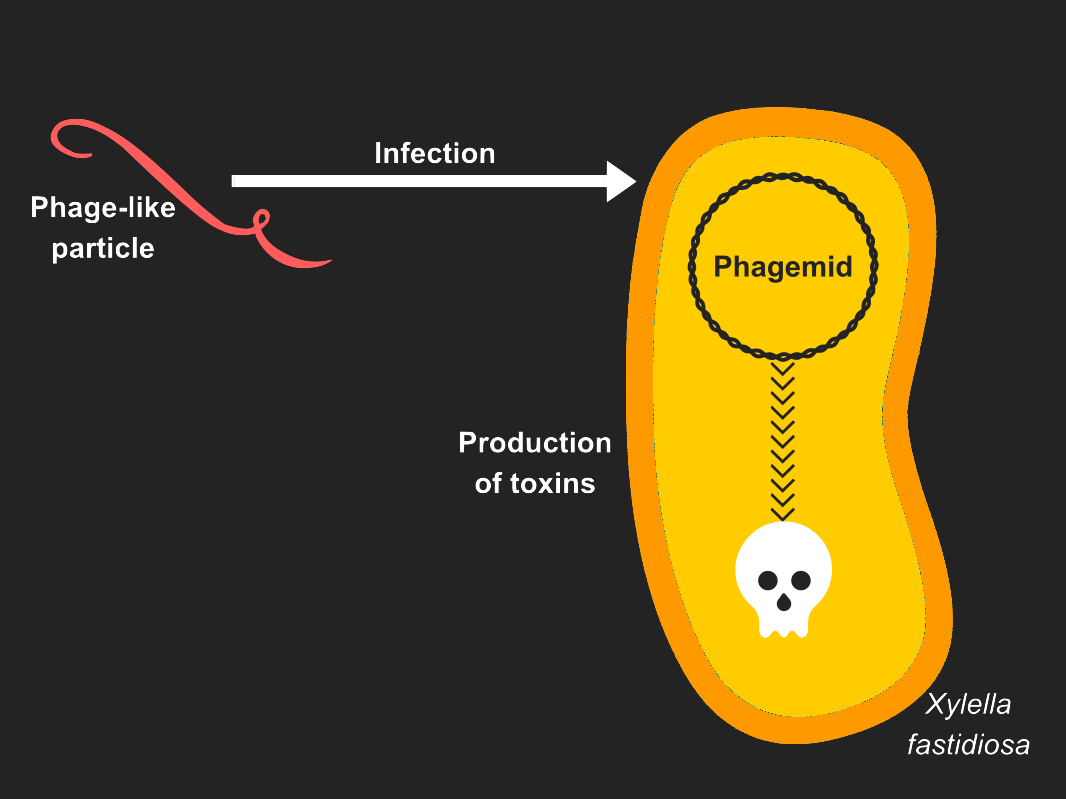|
|
| (60 intermediate revisions by 6 users not shown) |
| Line 1: |
Line 1: |
| | {{Aix-Marseille|title=Engineering bacteriophages|toc=__TOC__}} | | {{Aix-Marseille|title=Engineering bacteriophages|toc=__TOC__}} |
| − | ==Abstract==
| |
| | | | |
| − | Bacteriophages play a special role in nanoscale cargo-delivery developments, because they can be regarded as naturally occurring nanomaterials. Viral nanoparticles (VNPs), in particular bacteriophages, are attractive options for cargo-delivery as they are biocompatible, biodegradable, and non-infectious to mammals.<ref>Czapar, A. E. & Steinmetz, N. F. Plant viruses and bacteriophages for drug delivery in medicine and biotechnology. Current Opinion in Chemical Biology 38, 108–116 (2017).</ref>
| + | [[File:T--Aix-Marseille--Phage-2.png|450px|right|thumb|Phage-like particles process.]] |
| | | | |
| − | Phage systems, like M13, have been employed in biotechnological applications, most prominently in the identification and maturation of medically-relevant binding molecules through phage display. The application of phages in materials and nanotechnology is mainly due to their nanoscale size and simple life cycles. We choose to use those application in our advantage in order to target ''Xylella fastidiosa'' and other pathogenic bacteria.
| |
| | | | |
| − | ==M13 phages== | + | Bacteriophages play a special role in the development of nanoscale cargo-delivery because they can be regarded as naturally occurring nanomaterials. |
| | + | We chose to explore Phage-like particles (PLPs)<ref name="Roldão">Roldão, A., Silva, A. C., Mellado, M. C. M., Alves, P. M. & Carrondo, M. J. T. Viruses and Virus-Like Particles in Biotechnology: Fundamentals and Applications. in Reference Module in Life Sciences (Elsevier, 2017).</ref> for use against pathogenic bacteria like [[Team:Aix-Marseille/Xylella_fastidiosa|''Xylella fastidiosa'']]. |
| | + | Our goal is to use a phage-like [[Team:Aix-Marseille/M13|M13]] to inject a lethal toxin into the bacterium. |
| | + | To help our research we asked [[Team:Aix-Marseille/HP/Interviews|Mireille Ansaldi]], a local phage expert. |
| | | | |
| − | M13 is a filamentous phage that infects E. coli that carry the F-episome. Active infection with M13 does not kill the host cell. The M13 phage particle consists of a single-stranded DNA (ssDNA) genome encased in approximately 2700 copies
| + | Phage systems, like [[Team:Aix-Marseille/M13|M13]], have been widely employed in biotechnology, |
| − | of a major coat protein protein VIII.<ref name=Smeal>Smeal, S. W., Schmitt, M. A., Pereira, R. R., Prasad, A. & Fisk, J. D. Simulation of the M13 life cycle I: Assembly of a genetically-structured deterministic chemical kinetic simulation. Virology 500, 259–274 (2017).</ref> | + | most prominently in the identification and selection of high affinity molecules through phage display <ref>Salmond, G. P. C. & Fineran, P. C. A century of the phage: past, present and future. Nat Rev Micro 13, 777–786 (2015).</ref>. |
| | + | The use of phages in materials science and nanotechnology is mainly due to their nanoscale size and simple life cycles. |
| | + | We decided to profit from this wide application in order to target [[Team:Aix-Marseille/Xylella_fastidiosa|''X. fastidiosa'']] <ref name="Buttimer">Buttimer, C. et al. Bacteriophages and Bacterial Plant Diseases. Front. Microbiol. 8, (2017).</ref>. |
| | | | |
| − | ===Life cycle=== | + | ==Phage-like particle design== |
| | | | |
| − | [[File:T--Aix-Marseille--M13LCb.png|300px|center|thumb|M13 phage life cycle in ''Escherichia coli''.]] | + | Bacteriophages are able to generate new copies of themselves using the information in their genome <ref>Salmond, G. P. C. & Fineran, P. C. A century of the phage: past, present and future. Nat Rev Micro 13, 777–786 (2015).</ref>. |
| | + | In our design, we decided to limit the phage's ability to reproduce in order to contain it, as our interview with [[Team:Aix-Marseille/HP/Interviews|Jacques VAN HELDEN]] indicated this was an important point. |
| | + | There are already well-tried methods to reduce the reproductive capacity of phages as well as to make phages with foreign proteins<ref name= "Roldão" />. |
| | | | |
| − | The M13 life cycle begins with passage of the phage genome into a host cell in a process induced by protein III (pIII). First, the single-strand DNA (ssDNA) is converted in double-strand DNA (dsDNA) by pII and pX, which allow the production of phage's protein. After a while, as the concentrations of phage proteins increase and the ssDNA is back converted as dsDNA. The protein V (pV) binds to the ssDNA genomes for packaging into progeny phages. It recognise the single stranded M13 origin of replication. The pV-sequestered ssDNA is recognized by the membrane spanning phage assembly complex. <ref name=Smeal>Smeal, S. W., Schmitt, M. A., Pereira, R. R., Prasad, A. & Fisk, J. D. Simulation of the M13 life cycle I: Assembly of a genetically-structured deterministic chemical kinetic simulation. Virology 500, 259–274 (2017).</ref>
| + | Phage-like particles (PLPs) mimic the organization of native phages but lack the viral genome. |
| | + | They have been used as vehicles for drug and gene delivery and also as tools in nanobiotechnology <ref name="Czapar">Czapar, A. E. & Steinmetz, N. F. Plant viruses and bacteriophages for drug delivery in medicine and biotechnology. Current Opinion in Chemical Biology 38, 108–116 (2017). </ref>. |
| | + | In this project, we create [[Team:Aix-Marseille/M13|M13]] phage-like particles that inject toxin genes into target bacteria. |
| | | | |
| − | ===Protein III=== | + | ==Phage-like particle in the environment== |
| | | | |
| − | [[File:T--Aix-Marseille--M13p3b.png|400px|left|thumb|Description of the domains composing M13's protein III.]] | + | Beyond efficiency, we want our product to be environmentally friendly so that it doesn't contaminate nature with GMO's. |
| | + | To investigate environmental impact, we used soil samples to test the longevity of our phages in nature. |
| | + | We are also working with the [http://biam.cea.fr/drf/biam/Pages/laboratoires/lgbp.aspx LGBP lab], where we test our phage in the model organism ''Arabidopsis thaliana''. |
| | | | |
| − | The molecular interactions that mediate the entry of ''Escherichia coli'' derived filamentous phages into their hosts have been studied in considerable detail. The 424-amino-acid protein III is thought to consist of a leader sequence and three domains, separated by glycine-rich regions, that serve distinct roles in phage entry and release. The first two pIII domains, D1 and D2, are required for M13 adsorption and entry, while the third domain D3 is required for the assembly and release of M13 particles from host.<ref name="Heilpern">Heilpern, A. J. & Waldor, M. K. pIIICTX, a predicted CTXphi minor coat protein, can expand the host range of coliphage fd to include Vibrio cholerae. J. Bacteriol. 185, 1037–1044 (2003).</ref>
| + | <div class="row-icons white-icons"> |
| − | | + | * [[File:T--Aix-Marseille--Pdesign.png|link=Team:Aix-Marseille/M13_Design]]<span class="legend">Phage design</span> |
| − | ==Design==
| + | * [[File:T--Aix-Marseille--plant.png|link=Team:Aix-Marseille/M13_test]]<span class="legend">Environmental test</span> |
| − | | + | </div> |
| − | ===Phages-like particules===
| + | |
| − | | + | |
| − | Bacteriophages are capable of expressing their genomes, and generating new copies of themselves. We choose to limit the phage ability to reproduce itself in order to contain it. As it is possible to produce recombinant viruses that express foreign proteins, it is possible to restrain their capacity to reproduce themself. <ref name= Silva>Roldão, A., Silva, A. C., Mellado, M. C. M., Alves, P. M. & Carrondo, M. J. T. Viruses and Virus-Like Particles in Biotechnology: Fundamentals and Applications. in Reference Module in Life Sciences (Elsevier, 2017).</ref>
| + | |
| − | | + | |
| − | Virus-like particles (VLPs) are multiprotein structures that mimic the organization and conformation of authentic native viruses but lack the viral genome. They have been applied not only as prophylactic and therapeutic vaccines but also as vehicles in drug and gene delivery and, more recently, as tools in nanobiotechnology. <ref name= Silva>Roldão, A., Silva, A. C., Mellado, M. C. M., Alves, P. M. & Carrondo, M. J. T. Viruses and Virus-Like Particles in Biotechnology: Fundamentals and Applications. in Reference Module in Life Sciences (Elsevier, 2017).</ref>
| + | |
| − | | + | |
| − | ===Engineering M13===
| + | |
| − | [[File:T--Aix-Marseille--M13K07.png|350px|left]] | + | |
| − | | + | |
| − | In order to engineered multiple phages to infect various pathogenes we first decided to remove D1 and D2. As we wanted to insert those two domains in the p3 of the M13 genome. Thus we use M13KO7 from New England BioLab. '''M13KO7''' is an M13 derivative which carries the mutation Met40Ile in gII , with the origin of replication from P15A and the kanamycin resistance gene from Tn903 both inserted within the M13 origin of replication.
| + | |
| − | | + | |
| − | In '''M13KO7''' we wanted to insert two restriction site (AvrII and BspI) which are compatible with XbaI and AgeI. Thus, we create two types of biobrick, one with the signal sequence of M13, and the other one with D1 and D2 of another p3 from another filamentous phages.
| + | |
| − | | + | |
| − | In our design we wanted to keep the signal sequence and D3 of M13, because their are crucial for the formation of the phage. We just want to insert D1 and D2 from another phages (we’ll call it X).
| + | |
| − | | + | |
| − | [[File:T--Aix-Marseille--P3map.png|700px|center]] | + | |
| − | | + | |
| − | Another way to engineered M13, is to remove entierely the protein III from the phage genome and to reconstruct it in another plasmid. Thus, we create another part : p3_D3, which is the domain involved in the assembly and release of M13 particles.
| + | |
| − | | + | |
| − | [[Team:Aix-Marseille/M13KO7|Read more…]]
| + | |
| − | | + | |
| − | ===Phagemid=== | + | |
| − | | + | |
| − | As M13KO7 genome is not capable to be used for the phage assemblage, we will use a phagemid which will carry a toxin to assemble our ingeneered M13 phage. This phagemid , will contain the oriM13 which will gives it the opportunity to be used in the phage construction.
| + | |
| − | | + | |
| − | We thought about using the KillerRed toxin (Bba_K1184000), made by iGEM13_Carnegie_Mellon. This toxin has multiple benefits, because of the production of ROS occuring only in a yellow - orange light, we can produce phages-like particules carring this toxin without killing ''E.coli''. However, when this toxin will be produced in ''X. fastidiosa'' with the light coming from the sun, the bacterium will be harmed, even if it is in the Xylem vessels.
| + | |
| − | To optimise the production of this toxin in ''X. fastidiosa'' we tried to find a strong and constitutive promoter of this bacterium.
| + | |
| − | | + | |
| − | [[File:T--Aix-Marseille--M13pIII-KR.jpeg|400px|center]]
| + | |
| − | | + | |
| − | ===''X. fastidiosa'' promoter===
| + | |
| − | | + | |
| − | Firstly, we found best bidirectional hit (BBH) between Escherichia coli str. K-12 substr. MG1655 genes and ''Xylella fastidiosa'' 9a5c ones. In order to have a strong constitutive promoter we look at highly expressed genes from ''E.coli''.<ref>S, K., J, M., A, C. & D, K. Characterizations of highly expressed genes of four fast-growing bacteria., Characterizations of Highly Expressed Genes of Four Fast-Growing Bacteria. J Bacteriol 183, 183, 5025, 5025–5040 (2001).</ref>
| + | |
| − |
| + | |
| − | Secontly, with the tool rsat, for each gene selected we take the upstream sequence from the previous gene to the ATG And with the tool BPROM we choose the sequence with predicted box with the best score. We choose XF_RS01885 which is the BBH of purA, which code for an adenylosuccinate synthetase.
| + | |
| − | | + | |
| − | [[File:T--Aix-Marseille--M13pIII-SoftBerry.jpeg|400px]]
| + | |
| − | | + | |
| − | Finaly, we tried to find the ribosome binding site (RBS) consensus in ''Xylella fastidiosa''. To do so we search for the anti-Shine dalgarno sequence with ''Xylella fastidiosa'' 16S ribosomal RNA gene (accession number : NR_041779). The consus found is : AGGAGG. The RBS is supposed to be 6 to 12 nucleotide upstream the ATG. So we modified the sequence. And we added Rfc10 prefix and suffix region.
| + | |
| | | | |
| | ==References== | | ==References== |
| | | | |
| | <references/> | | <references/> |
Engineering bacteriophages

Phage-like particles process.
Bacteriophages play a special role in the development of nanoscale cargo-delivery because they can be regarded as naturally occurring nanomaterials.
We chose to explore Phage-like particles (PLPs)[1] for use against pathogenic bacteria like Xylella fastidiosa.
Our goal is to use a phage-like M13 to inject a lethal toxin into the bacterium.
To help our research we asked Mireille Ansaldi, a local phage expert.
Phage systems, like M13, have been widely employed in biotechnology,
most prominently in the identification and selection of high affinity molecules through phage display [2].
The use of phages in materials science and nanotechnology is mainly due to their nanoscale size and simple life cycles.
We decided to profit from this wide application in order to target X. fastidiosa [3].
Phage-like particle design
Bacteriophages are able to generate new copies of themselves using the information in their genome [4].
In our design, we decided to limit the phage's ability to reproduce in order to contain it, as our interview with Jacques VAN HELDEN indicated this was an important point.
There are already well-tried methods to reduce the reproductive capacity of phages as well as to make phages with foreign proteins[1].
Phage-like particles (PLPs) mimic the organization of native phages but lack the viral genome.
They have been used as vehicles for drug and gene delivery and also as tools in nanobiotechnology [5].
In this project, we create M13 phage-like particles that inject toxin genes into target bacteria.
Phage-like particle in the environment
Beyond efficiency, we want our product to be environmentally friendly so that it doesn't contaminate nature with GMO's.
To investigate environmental impact, we used soil samples to test the longevity of our phages in nature.
We are also working with the [http://biam.cea.fr/drf/biam/Pages/laboratoires/lgbp.aspx LGBP lab], where we test our phage in the model organism Arabidopsis thaliana.
-
 Phage design
Phage design
-
 Environmental test
Environmental test
References
- ↑ 1.0 1.1 Roldão, A., Silva, A. C., Mellado, M. C. M., Alves, P. M. & Carrondo, M. J. T. Viruses and Virus-Like Particles in Biotechnology: Fundamentals and Applications. in Reference Module in Life Sciences (Elsevier, 2017).
- ↑ Salmond, G. P. C. & Fineran, P. C. A century of the phage: past, present and future. Nat Rev Micro 13, 777–786 (2015).
- ↑ Buttimer, C. et al. Bacteriophages and Bacterial Plant Diseases. Front. Microbiol. 8, (2017).
- ↑ Salmond, G. P. C. & Fineran, P. C. A century of the phage: past, present and future. Nat Rev Micro 13, 777–786 (2015).
- ↑ Czapar, A. E. & Steinmetz, N. F. Plant viruses and bacteriophages for drug delivery in medicine and biotechnology. Current Opinion in Chemical Biology 38, 108–116 (2017).




